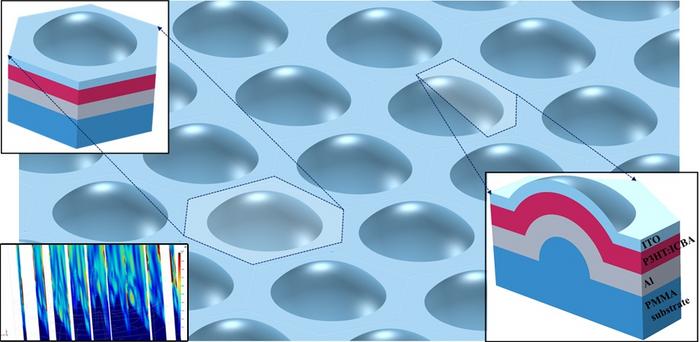Recent studies introduce a groundbreaking approach to enhance organic solar cells using a design based on hemispherical shells. This design significantly improves angular light absorption, proving to be highly beneficial for applications that demand versatile light gathering capabilities, such as in wearable technologies. Published by the SPIE – The International Society for Optics and Photonics, the research focuses on an organic active layer shaped like a hemispherical shell for photovoltaic uses. This structure is engineered to boost energy efficiency and broaden angular light absorption. The drive towards green energy has underscored the necessity for solar cells that are not only more efficient but also sustainable. Organic solar cells have risen as a viable alternative to their silicon-based counterparts, attributed to their flexibility and lower costs. Yet, enhancing their efficiency is a constant endeavour.
Innovating Structure for Enhanced Performance
Researchers from Abdullah Gül University in Türkiye are leading the charge by redefining the structure of organic solar cells through a hemispherical shell design. This novel approach, detailed in the SPIE Journal of Photonics for Energy, is set to transform renewable energy technology by significantly boosting light absorption and angular responsiveness. The study employs advanced computational methods and benchmarks to demonstrate the superior performance of this innovative design. Professor Dooyoung Hah and his team have delved into the hemispherical shell’s absorption characteristics using three-dimensional finite element analysis (FEA). This method dissects the structure into finite elements, enabling detailed simulations of how the structure interacts with light across various wavelengths and incident angles. The findings from the FEA are compelling. The hemispherical shell design showed a 66 percent increase in light absorption for transverse electric (TE)-polarized light and a 36 percent increase for transverse magnetic (TM)-polarized light, compared to flat counterparts. Moreover, this design outperformed previous semicylindrical designs, showing a 13 percent and 21 percent increase in absorption for TE and TM polarized light, respectively.

A Brighter Future with Wide-Ranging Applications
The hemispherical shell’s design does not only excel in light absorption but also in its wide angular coverage, reaching up to 81 degrees for TE polarization and 82 degrees for TM polarization. This feature is particularly crucial for applications that require efficient light capture from various angles, such as wearable tech. Professor Hah envisions a vast array of applications for these hemispherical-shell-shaped active layers in organic solar cells, including biomedical devices, power-generating windows, greenhouses, and devices for the Internet of Things. This leap in organic solar cell design, powered by the strategic use of finite element analysis and structural innovation, paves the way toward a more sustainable and renewable energy future.
Read the full study here.










